#Louis Bleriot
Explore tagged Tumblr posts
Text

Robert Delaunay, Homage to Blériot
2 notes
·
View notes
Text
Louis Bleriot's flight
This date in 1909 saw Louis Blériot's historic flight across the English Channel. Louis Blériot's day job before he got into flying was making car headlamps. In fact, he had developed the world's first practical headlamp for automobiles and was supplying them to the biggest car manufacturers of the day.
0 notes
Text

Quai Louis Bleriot By Rurik Dmitrienko
#original photographers#photographer on tumblr#photographie noir et blanc#black and white photography#french photography#french photographer#black and white#rurik dmitrienko#rurik#paris
31 notes
·
View notes
Text
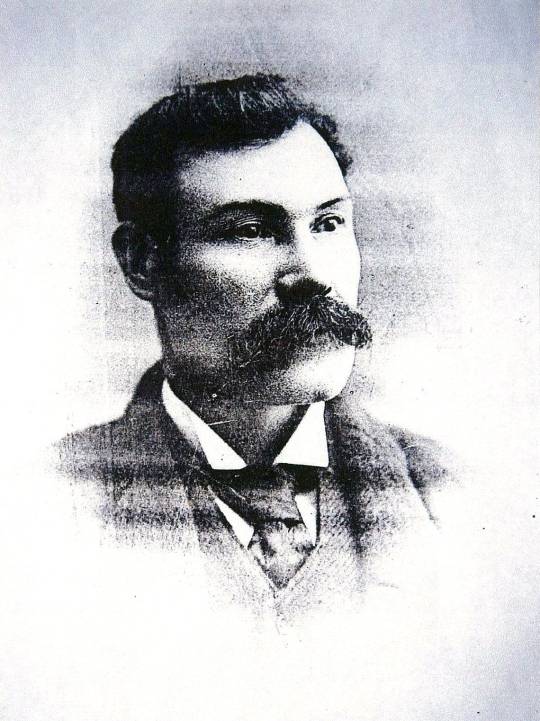
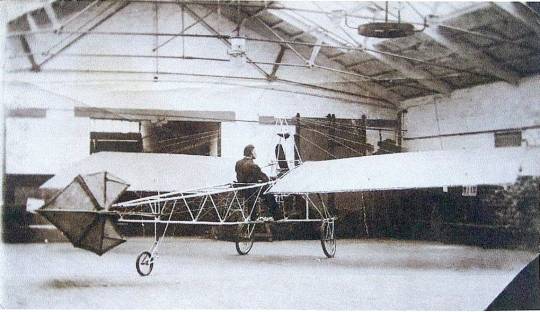
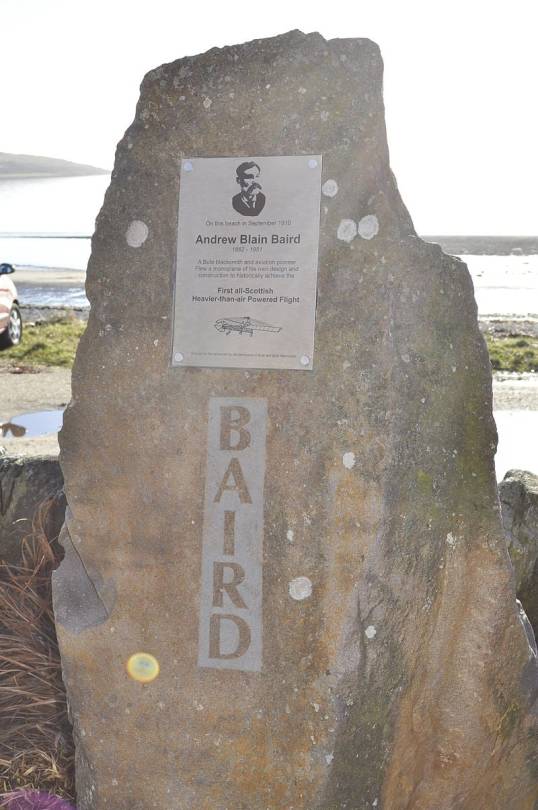
On 17th September 1910 Andrew Blain Baird, working as a blacksmith in Rothesay, made the first flight by an entirely Scottish designed and built aeroplane.
Andrew Blain Baird was born in 1862 in Sandhead on Luce Bay in the Rhinns of Galloway, Scotland. One of three sons, his father was a fisherman and handloom weaver. He became an apprentice to a blacksmith in Sandhead, worked as a lighthouse keeper on Lismore, then as an ironworker at Smith and McLean’s on the Clyde shipyards before finally setting up on his own as a blacksmith at 113 High Street in Rothesay, Isle of Bute, when he was 25.
Baird was a daring thinker, a pioneer and innovator. He created many improvements to the plough, built a unique model of the triple expansion engine powered by electricity and was one of the original members of the Scottish Aeronautical Society.
Eager to expand his knowledge of aviation, Baird corresponded with the early aviators Louis Bleriot and S. F. Cody and exchanged information about construction of aircraft and their flight. Inspired by a visit to Blackpool for England’s first ever Aviation Week in October 1909, he returned to Rothesay ready to design and build his own sophistocated monoplane similar to Bleriot’s but with an engine built by the Alexander Brothers in Edinburgh that was 4-cylinder, air-cooled and with water-cooled valves. The control system he would design for his aircraft would be unlike anything that had been developed at the time. His wife sewed brown trussore silk for the wings.
The Baird monoplane, once completed in his own shop in the summer of 1910, went on show at an exhibition in the Esplanade Flower Garden at the front of Bute. and then to the amazement and excitement of all it was moved to the Bute Highland Games on 20 August 1910.
From there it was taken for storage and readying directly to a barn owned by Willie Dickie at his farm at Cranlasgvourity, Bute.
Scottish aviation history was about to be made when in the very early morning of 17 September 1910, the Baird Monoplane was taken by a Mr Scott on his horse-drawn wagon to Ettrick Bay - with its wide expanse of sand reminiscent of the Kitty Hawk N.C. site chosen by the Wright Brothers for their historic flight.
In the sunshine and amid the wide golden sands of Ettrick Bay the first entirely Scottish designed and built plane sat ready to make history.
Andrew Baird was, on that day, assisted by his friend Ned Striven who was an Electrical Engineer with the Burgh of Rothesay and who had assisted him with the engine and related design considerations.
There on the wide expanse of Ettrick Bay beach, Baird and Ned Striven started the engine. All was ready. Hearts raced with anticipation. A small crowd looked on in amazement. And the flight into history began.
Flight Magazine on 24 September 1910,[1] described it as follows:
“Mr Baird was seated in the machine and on the engine being started the plane travelled along the sands at good speed. Naturally, on clearing the ground, the swerving influence of the axle ceased and the influence of the steering wheel brought the machine sharply round to the right causing it to swoop to the ground. The contact was so sharp that the right wheel buckled and the right plane suffered some abrasion by scraping along the beach.”
Andrew Blain Baird had realised his dream - he had flown in an aircraft of his own design and construction.
His was the first entirely Scottish flight of a heavier than air powered craft.
Noted pioneer aircraft manufacturer Tommy Sopwith sailed his yacht into Rothesay Bay in 1910 to visit the Marquess and to attend the Highland Games and there viewed the on display Baird monoplane. Very impressed, he was given permission to incorporate some of Baird’s innovations into the aircraft he was designing and which would have such a great impact on the course of World War I. Over the years, many others from around the world involved in aviation consulted Andrew Baird and learned from his pioneering experience and innovative mind.
12 notes
·
View notes
Text
In order:










70 notes
·
View notes
Text




IMAGENES Y DATOS INTERESANTES DEL DIA 25 DE JULIO DE 2024
Día Mundial para la Prevención de los Ahogamientos, Día Internacional de la Mujer Afrodescendiente, Año Internacional de los Camélidos.
Santa Valentina, Santa Glosinda, San Cristóbal y Santiago Apostol.
Tal día como hoy en el año 2018
Un grupo de científicos italianos anuncian que el radar instalado en la sonda espacial europea Mars Express ha detectado, después de muchos años de búsqueda, un gran lago de agua salada bajo la superficie del polo sur de Marte, reabriendo el debate sobre la posibilidad de existencia de vida bajo el subsuelo del planeta rojo. (Hace 6 años)
2000
El avión supersónico de pasajeros anglo-francés Concorde, de la compañía Air France, se estrella pocos minutos después de despegar del aeropuerto Roissy Charles de Gaulle de París (Francia), sobre el hotel Relais Bleu en la localidad de Gonesse, a 17 km al norte de París, poco antes de las 17:00 hora local (15:00 GMT), causando la muerte de las 109 personas que van bordo y de cuatro personas en tierra. La aeronave ha caído en picado al suelo después de que uno de los motores del ala izquierda se incendiara durante el despegue. Este accidente será el principio del fin de este polémico avión, que realizará su último vuelo el 23 de octubre de 2003. (Hace 24 años)
1992
Con la presencia de 169 países y 9.367 deportistas, se inauguran en Barcelona (España) las XXII Olimpiadas de la Era Moderna. Se clausurarán el 9 de agosto. (Hace 32 años)
1943
En Italia, el rey Víctor Manuel III declara ilegal el Gobierno fascista y Mussolini es arrestado por la policía tras 21 años de dictadura. Con la excusa de liberarlo, Alemania invadirá Italia. (Hace 81 años)
1909
Louis Bleriot, francés, gana las 1.000 libras que ofrece el diario británico Daily Mail al atravesar en aeroplano el Canal de la Mancha en un vuelo de 37 minutos de duración. (Hace 115 años)
1814
Cerca de las cataratas del Niágara (EE.UU.), tropas británicas comandadas por el general Phineas Riall frustran una invasión de Canadá por una fuerza de EE.UU., dirigida por el general Jacob Brown, en la Batalla de Lundy's Lane, durante la Guerra de 1812. (Hace 210 años)
1814
George Stephenson, ingeniero inglés, pone en marcha su primera locomotora a vapor, inventada para circular sobre carriles de hierro. (Hace 210 años)
1567
El español Diego de Losada funda la ciudad de Caracas (Venezuela). (Hace 457 años)
1537
Aunque en 1534 y 1535 Sebastián de Belalcázar, en su expedición hacia el norte, fundó la ciudad de Santiago de Guayaquil, que será quemada y refundada en dos ocasiones, no es hasta el día de hoy con su refundación y cambio de emplazamiento cuando la ciudad, pensada como astillero y puerto comercial al servicio de la Corona española, comienza a tomar auge. (Hace 487 años)
1524
En la actual Guatemala, en un paraje cercano a Iximché, el español Don Pedro de Alvarado y Contreras, funda la bonita ciudad de Santiago de los Caballeros de Guatemala. En 1979 será designada Patrimonio cultural de la Humanidad por la Unesco. (Hace 500 años)
1139
El condado de Portugal, hasta ahora dependiente del reino de Castilla y León regido por Alfonso VII, se convierte en reino al resultar proclamado por sus tropas rey de Portugal el conde Alfonso I, tras haber vencido a los árabes en Ourique. En 1143 se firmará el tratado de Zamora entre este reino y Castilla, reconociendo de hecho la independencia potuguesa y marcando el límite territorial entre ambos territorios. (Hace 885 años)
306
Al morir en el día de hoy en Eboracum (actual York en Inglaterra) el emperador del Imperio Romano de Occidente Gayo Flavio Valerio Constancio durante una expedición contra los pictos y escotos, su hijo Constantino I es proclamado augusto (emperador) por sus tropas tal como su padre ha recomendado a su ejército en su lecho de muerte. El reinado de Constantino será transcendental para occidente por su conversión al cristianismo en 313. (Hace 1718 años)
4 notes
·
View notes
Text
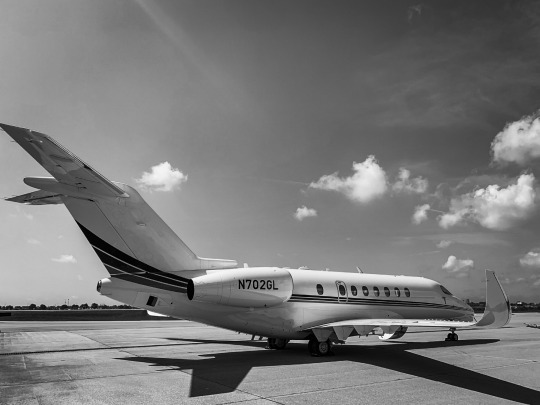
“The most beautiful dream that has haunted the heart of man since Icarus is today reality.“ — Louis Bleriot. Quoted by Louise Faure-Favrier in Les chevaliers de l’air, 1923.
Cessna Citation Longitude at John Glenn International Airport (KCMH), Columbus, Ohio. August 15, 2019.
By @aviationgeek71
17 notes
·
View notes
Photo

25 juillet 1909 : première traversée de la Manche en aéroplane, réalisée par Louis Blériot ➽ http://bit.ly/Bleriot-Traversee-Manche Sans boussole ni carte, Louis Blériot décolle à 4h35 du matin en ce jour d’été 1909 du lieu-dit « Les Baraques » à Sangatte, près de Calais : son vol, qui se déroule sans souci, s’achève par un atterrissage assez violent, sans conséquence pour le pilote, près de Douvres dans la région du Kent, après un parcours de 38 km effectué en moins de 30 minutes
#CeJourLà#25Juillet#Blériot#traversée#Manche#aéroplane#monoplan#avion#pilote#aviateur#exploit#Calais#Douvres#France#Angleterre#histoire#france#history#passé#past#français#french#news#événement#newsfromthepast
6 notes
·
View notes
Text
Birthdays 7.1
Beer Birthdays
James Younger (1763)
Chris White (1968)
Five Favorite Birthdays
Dan Aykroyd; comedian, actor (!952)
Willie Dixon; blues singer (1915)
Indiana Jones; archeologist (1899)
Gottfried Leibniz; German mathematician (1646)
William Strunk Jr.; grammarian (1869)
Famous Birthdays
Wally Amos Jr.; "Famous Amos" cookies (1936)
Pamela Anderson; model, actor (1967)
Karen Black; actor (1939)
Louis Bleriot; aviator, inventor (1872)
Lisa Blount; actor (1957)
Genevieve Bujold; actor (1942)
Leslie Caron; actor (1931)
Thomas Green Clemson; educator (1807)
James Cotton; blues harmonica player (1935)
Olivia de Havilland; actor (1916)
Diana, Princess of Wales; 1st wife of Charles, mother of Prince Harry (1961)
Jamie Farr; actor (1934)
Clare Forlani; actor (1972)
Debbie Harry; rock singer (1945)
Estee Lauder; cosmetics entrepreneur (1906)
Charles Laughton; actor (1899)
Carl Lewis; olympic track & field athlete (1961)
Mia Malkova; adult actress (1992)
Terrence Mann; actor, dancer (1951)
Jean Marsh; actor (1934)
Lorna Patterson; actor (1956)
Sydney Pollack; film director (1934)
George Sand; French writer (1804)
Fred Schneider; rock singer (1951)
Sufjan Stevens; pop singer, songwriter (1975)
Twyla Tharp; choreographer (1941)
Liv Tyler; actor (1977)
Milhouse Van Houten; fictional character (1980)
Earle Warren; jazz saxophonist, singer (1914)
William Wyler; film director (1902)
3 notes
·
View notes
Video
youtube
THE RINGER: AN UNUSUAL AIRCRAFT FROM THE OUTERZONE! ST. GEORGE UTAH 2024
Jan 3, 2025 So THIS is a very unusual model indeed my friends! This is called the "Ringer" and the plans are available here on the Outerzone UK: https://outerzone.co.uk/plan_details....
Thomas B. who travelled to St. George all the way from Texas brought this very strange, and very unique model aling at the last minute and I'm glad he did!
It is powered by a Speed 400 swinging a 7.5x3 prop, and using a 3s1300mAh battery going through a 25A ESC.
You'll notice I'm not calling this an aeroplane - it's really not! It's an aircraft.
Here's the write-up from the Outerzone: "Aircraft with annular airfoils (or lifting drums) instead of conventional wings have been theorized, proposed and actually built since around the turn of the century. Earlybird Danish pioneer Ellehammer tried to fly one. (He had better luck at a later date with a more conventional design.) Louis Bleriot actually did fly a somewhat diluted version - a flattened oval annular-wing tow glider on floats. Ellehammer's full-scale machine wasn't a success, but the method of control he proposed - 'slewing' a lifting drum - worked well on this model."
I hope you enjoy this peek into the bizarre and truly unique; It really does fly well!
Cheers everyone, all the best, and Happy New Year!
0 notes
Text
Louis Bleriot
Louis Blériot (1872-1936) was a French aviator and engineer renowned for his pioneering contributions to aviation. He is best known for making the first successful flight across the English Channel on July 25, 1909, in his Blériot XI monoplane, which won him a £1,000 prize from the Daily Mail [1][4]. Blériot also developed the first practical automobile headlamp and founded Blériot Aéronautique,…
0 notes
Text




On 17th September 1910 Andrew Blain Baird, working as a blacksmith in Rothesay, made the first flight by an entirely Scottish designed and built aeroplane.
Baird was born on January 1st 1862 at Sandhead, Luce Bay in the Rhinns of Galloway.
One of three sons, his father was a fisherman and handloom weaver. He became an apprentice to a blacksmith in Sandhead, worked as a lighthouse keeper on Lismore, then as an ironworker at Smith and McLean’s on the Clyde shipyards before finally setting up on his own as a blacksmith at 113 High Street in Rothesay, Isle of Bute, when he was 25.
Baird was a daring thinker, a pioneer and innovator. He created many improvements to the plough, built a unique model of the triple expansion engine powered by electricity and was one of the original members of the Scottish Aeronautical Society.
Eager to expand his knowledge of aviation, Baird corresponded with the early aviators Louis Bleriot and S. F. Cody and exchanged information about construction of aircraft and their flight. Inspired by a visit to Blackpool for England’s first ever Aviation Week in October 1909, he returned to Rothesay ready to design and build his own sophisticated monoplane similar to Bleriot’s but with an engine built by the Alexander Brothers in Edinburgh that was 4-cylinder, air-cooled and with water-cooled valves. The control system he would design for his aircraft would be unlike anything that had been developed at the time. His wife sewed brown trussore silk for the wings.
The Baird monoplane, once completed in his own shop in the summer of 1910, went on show at an exhibition in the Esplanade Flower Garden at the front of Bute. and then to the amazement and excitement of all it was moved to the Bute Highland Games on 20 August 1910.
From there it was taken for storage and readying directly to a barn owned by Willie Dickie at his farm at Cranlasgvourity, Bute.
Scottish aviation history was about to be made when in the very early morning of 17 September 1910, the Baird Monoplane was taken by a Mr Scott on his horse-drawn wagon to Ettrick Bay - with its wide expanse of sand reminiscent of the Kitty Hawk N.C. site chosen by the Wright Brothers for their historic flight.
In the sunshine and amid the wide golden sands of Ettrick Bay the first entirely Scottish designed and built plane sat ready to make history.
Andrew Baird was, on that day, assisted by his friend Ned Striven who was an Electrical Engineer with the Burgh of Rothesay and who had assisted him with the engine and related design considerations.
There on the wide expanse of Ettrick Bay beach, Baird and Ned Striven started the engine. All was ready. Hearts raced with anticipation. A small crowd looked on in amazement. And the flight into history began.
Flight Magazine on 24th September 1910,described it as follows:
“Mr Baird was seated in the machine and on the engine being started the plane travelled along the sands at good speed. Naturally, on clearing the ground, the swerving influence of the axle ceased and the influence of the steering wheel brought the machine sharply round to the right causing it to swoop to the ground. The contact was so sharp that the right wheel buckled and the right plane suffered some abrasion by scraping along the beach.”
Andrew Blain Baird had realised his dream - he had flown in an aircraft of his own design and construction.
His was the first entirely Scottish flight of a heavier than air powered craft.
Noted pioneer aircraft manufacturer Tommy Sopwith sailed his yacht into Rothesay Bay in 1910 to visit the Marquess and to attend the Highland Games and there viewed the on display Baird monoplane. Very impressed, he was given permission to incorporate some of Baird’s innovations into the aircraft he was designing and which would have such a great impact on the course of World War I.
Over the years, many others from around the world involved in aviation consulted Andrew Baird and learned from his pioneering experience and innovative mind
7 notes
·
View notes
Text
On veut des noms - Jean Paul Clair(B)
B BLERIOT Louis (1872–1936) : A connu la célébrité en faisant la Manche, il ne s’agissait pas de caler ! Les avions n’étaient pas compliqués, il a fait sa traversée dans le plus simple appareil. BLONDEL Marc (1938-2014) : Secrétaire général de FO pendant plusieurs années. A son départ, certains ont déploré une absence de Marc. BLONDIN Antoine (1922-1991) : Spécialiste du Tour de France pour le…

View On WordPress
0 notes
Text


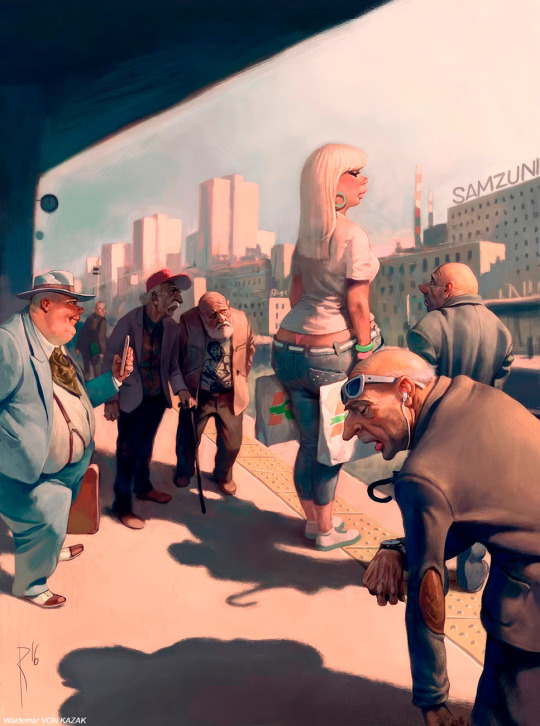
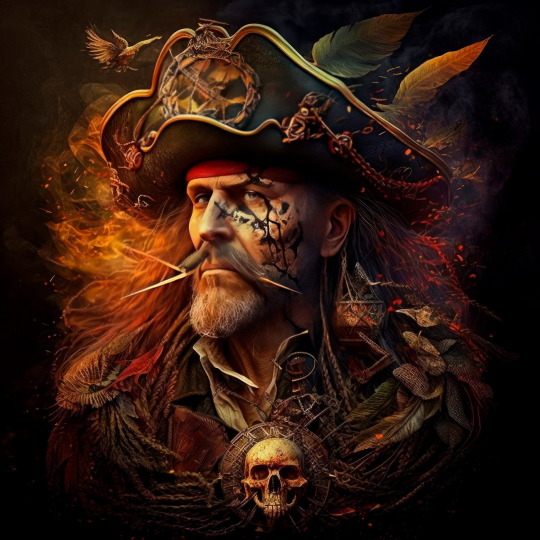
IMAGENES Y DATOS INTERESANTES DEL DIA 16 DE ABRIL DE 2024
Día Mundial de la Voz, Día Internacional contra la Esclavitud Infantil, Día Mundial del Emprendimiento, Día Internacional del Síndrome de Wolf-Hirschhorn, Semana Mundial de la Creatividad y la Innovación, Año Internacional de los Camélidos.
San Amilcar, Santa Anastasia y Santa Potenciana.
Tal día como hoy en el año 2016
Ocurre un terremoto en Ecuador de 7,8 grados en la escala de Richter con epicentro en Esmeraldas, causando 670 víctimas mortales y numerosos daños materiales.
2014
Se hunde el transbordador surcoreano MV Sewol cerca de la Isla Jindo, en el que mueren 304 personas. Acaba provocando una serie de críticas contra el gobierno y los medios de comunicación.
2007
Ocurre la Masacre de Virginia Tech, en Blacksburg (Estados Unidos), donde un joven mata a 32 estudiantes en el campus de la universidad, incluyendo a él mismo. Además 29 personas resultaron heridas.
1961
Fidel Castro anuncia el carácter socialista de la Revolución Cubana (enero de 1959), durante el entierro a las víctimas de un bombardeo estadounidense. Este hecho provocará un intento de invasión a la isla ordenado por el presidente de Estados Unidos J. F. Kennedy.
1948
Con el fin de restablecer la economía de Europa después de la II Guerra Mundial, 16 países europeos fundan la Organización Europea de Cooperación Económica, que más tarde pasará a llamarse Organización para la Cooperación Económica y el Desarrollo, con sede en París (Francia). Éste será uno de los primeros pasos buscando la unidad en Europa que culminará en la futura Unión Europea. (Hace 76 años)
1917
Con el país inmerso en el caos debido a la I Guerra Mundial y a la abdicación del Zar Nicolás II, Vladimir Ilich Lenin llega a Petrogrado (Rusia) desde su exilio en Suiza para tomar el control de la revolución. Aunque primero exiliado en Siberia y después huido a Europa debido a sus actividades políticas y revolucionarias, Lenin conseguirá reforzar el Partido Bolchevique mediante sus escritos y su fluida oratoria. Siete meses después de su regreso, y bajo la dirección de Lenin, los bolcheviques se harán con el poder. Lenin supervisará la creación de la Unión de Repúblicas Socialistas Soviéticas y dirigirá el país hasta su muerte en enero de 1924, tras haber sido tratado contra la sífilis el año anterior. (Hace 107 años)
1912
Harriet Quimby, intrépida aviadora americana, se convierte en la primera mujer en cruzar el Canal de la Mancha, al tripular su moderno monoplano, fabricado por el pionero francés de la aviación Louis Bleriot, a través de una espesa niebla desde las costas de Dover, en Inglaterra, hasta las playas de Hardelot, en Francia. Fallecerá en julio en un accidente aéreo. (Hace 112 años)
1746
En la batalla de Culloden, Escocia, el ejército inglés derrota a las fuerzas escocesas bajo el mando de Carlos Eduardo Estuardo, poniendo fin al levantamiento Jacobita para tratar de restaurar a la Casa de Estuardo al trono de Inglaterra. Ésta será la última batalla librada en suelo británico hasta la fecha. (Hace 278 años)
1582
En la actual Argentina, Hernando de Lerma, gobernador de Tucumán, cumpliendo órdenes del virrey del Perú, Francisco de Toledo, funda la ciudad de San Felipe de Lerma en el valle de Salta, con el fin de crear una escala en las comunicaciones entre Lima y Buenos Aires. La población más adelante pasará a llamarse sólamente Salta. (Hace 442 años)
1531
En México, fray Toribio Paredes, natural de Benavente, España, a quien los nativos llaman "Motolinía" ("pobrecito" en lengua náhuatl, por su vida sencilla), funda la ciudad de Puebla, en el Valle de Cuetlaxcoapan, en la margen oriental del río San Francisco. Por su situación, será paso obligado del comercio y prosperá con rapidez. (Hace 493 años)
3 notes
·
View notes
Photo

25 juillet 1909 : première traversée de la Manche en aéroplane, réalisée par Louis Blériot ➽ http://bit.ly/Bleriot-Traversee-Manche Sans boussole ni carte, Louis Blériot décolle à 4h35 du matin en ce jour d’été 1909 du lieu-dit « Les Baraques » à Sangatte, près de Calais : son vol, qui se déroule sans souci, s’achève par un atterrissage assez violent, sans conséquence pour le pilote, près de Douvres dans la région du Kent, après un parcours de 38 km effectué en moins de 30 minutes
#CeJourLà#25Juillet#Blériot#traversée#Manche#aéroplane#monoplan#avion#pilote#aviateur#exploit#Calais#Douvres#France#Angleterre#histoire#france#history#passé#past#français#french#news#événement#newsfromthepast
7 notes
·
View notes
Text
History
July 25, 1898 - During the Spanish-American War, the U.S. invaded Puerto Rico, which was then a Spanish colony. In 1917, Puerto Ricans became American citizens and Puerto Rico became an unincorporated territory of the U.S. Partial self-government was granted in 1947 allowing citizens to elect their own governor. In 1951, Puerto Ricans wrote their own constitution and elected a non-voting commissioner to represent them in Washington.
July 25, 1909 - The world's first international overseas airplane flight was achieved by Louis Bleriot in a small monoplane. After asking, "Where is England?" he took off from France and landed in England near Dover, where he was greeted by British police.
July 25, 1943 - Mussolini was deposed just two weeks after the Allied attack on Sicily. The Fascist Grand Council met for the first time since December of 1939 then took a confidence vote resulting in Mussolini being ousted from office and placed under arrest. King Victor Emmanuel of Italy then ordered Marshal Pietro Badoglio to form a new government.
July 25, 1956 - The Italian luxury liner Andrea Doria sank after colliding with the Swedish liner Stockholm on its way to New York. Nearby ships came to the rescue, saving 1,634 people, including the captain and the crew, before the ship went down.
0 notes